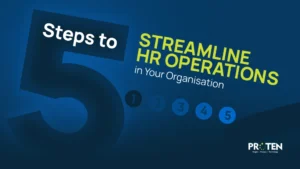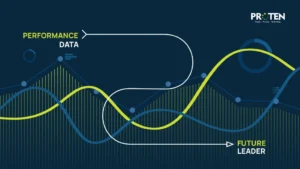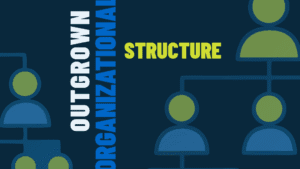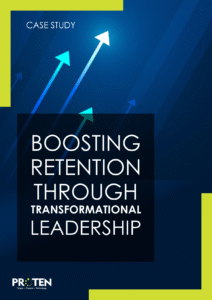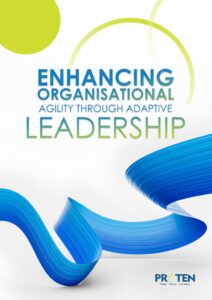Every company loves to say “our people are our greatest asset”, but if that’s true, why do 41% of HR departments still fail to train their teams on how to protect employee data? And why do more than a third operate without a formal data protection policy? According to a survey by HR Drive, these numbers aren’t just concerning, they’re negligent.
Employee data is personal, powerful, and vulnerable, especially in a digital ecosystem where phishing attacks, internal leaks, and rogue actors are all too common. To this effect, it is careless to treat employee data as simply an afterthought. A single breach can cause irreparable financial damage, destroy morale, and open floodgates to legal repercussions.
But swinging the pendulum too far the other way by locking down data too tightly can be just as toxic.
The real mastery lies in protecting employee data without suffocating employee privacy, and this guide will walk you through how to do just that with clarity, strength, and strategy.
Understanding the Types of Employee Data at Risk
Before you can protect anything, you need to understand what you’re defending. Employee data is a spectrum of deeply personal information that touches every part of a person’s life and career. First, there’s the Personally Identifiable Information (PII) like names, addresses, social security numbers, and banking details. Losing these exposes employees to identity theft and fraud.
Then come employment records such as performance reviews, disciplinary actions, salary history, and promotion decisions. Mishandling this data not only opens doors to legal disputes but can severely erode workplace trust. Health and benefits information, including medical records and insurance claims, is governed by strict privacy laws and deserves high-level protection.
Finally, there’s digital activity data, like login credentials, email communications, and even device usage patterns. This layer is often overlooked but critical, as it can be used to trace behavior, movements, and even moods.
Recognising these categories is less academic and more operational because each one demands a different level of protection, and lumping them together under a vague “security” banner is a recipe for disaster.
So how do you Protect Employee Data?
Although protecting employee data is tasking, with an understanding of what you are protecting, you can effectively ensure data security with these 6 steps:
1. Implementing Strong Access Controls
The more people who have access to sensitive data, the higher the risk of breaches. It’s that simple. Yet many organisations still operate under outdated models where data is available to far too many hands. Implementing role-based access controls is your first line of defense, as only employees with a direct need should ever touch sensitive HR data.
Additionally, multi-factor authentication (MFA) should be a staple for every business as HR and payroll systems should never be accessible through a single point of entry. MFA forces an extra layer of identity verification, significantly reducing the risk of unauthorized access.
You need to know who’s accessing what, when, and why, at all times. Review permissions regularly, especially after internal role changes or terminations. Doing so ensures zero assumptions and airtight accountability.
2. Ensuring Compliance with Data Protection Laws
No matter where your business operates, there’s a web of data protection laws that you must respect. The EU’s GDPR is among the strictest, giving employees explicit rights over how their data is collected, used, and stored. The Nigeria Data Protection Act (NDPA) mirrors many of those protections locally, while the California Consumer Privacy Act (CCPA) adds yet another layer for U.S.-based operations.
But compliance isn’t just about avoiding fines—it’s about building trust. Create and maintain clear, readable privacy policies that explain to employees what data is collected and why. Avoid vague legal jargon. Be honest, be direct.
And don’t stop there. Train your HR teams. They’re the frontline guardians of this data, and they need to understand not just what the law says, but what it means. Equip them to recognize ethical grey zones, not just legal red flags.
3. Using Secure Technology and Systems
Technology is both your sword and shield in this battle. Choose wisely. Encrypt everything—data in transit, data at rest, and especially data stored in the cloud. Encryption scrambles sensitive information into unreadable gibberish unless accessed with the correct key, turning stolen data into useless garbage for attackers.
Invest in secure Human Resource Management Systems (HRMS) that don’t just track time off, but come armed with advanced security features. Look for platforms that offer real-time threat detection, regular backups, and robust user controls.
Additionally, it’s important to always keep your systems updated. That “Remind me later” button is a security gap waiting to be exploited. Schedule regular vulnerability assessments and penetration tests to stay ahead of evolving threats.
4. Creating Clear Employee Data Policies
If you’re collecting data, your employees deserve to know how, when, and why. Transparency isn’t just a courtesy—it’s a safeguard. Create data policies that are easily accessible and written in plain language. Outline the types of data collected, the purpose behind the collection, how long the data is stored, and who has access.
Beyond policy creation, make sure your people understand these policies. Hold onboarding sessions, Q&As, and even interactive training if necessary. Employees should feel empowered to ask: Why do you need this data? How will it be used?
Offer them agency. Let employees view, correct, or even request deletion of their data when appropriate. Autonomy builds trust, and trust strengthens security from within.
5. Preventing Insider Threats and Human Error
Here’s the uncomfortable truth: your biggest threats aren’t always external. Many breaches come from the inside—sometimes intentionally, often through innocent mistakes. A poorly chosen password, a misdirected email, a rogue USB device… small acts, big consequences.
That’s why cybersecurity training should be mandatory for everyone, not just IT. Teach employees how to spot phishing attempts, create strong passwords, and follow proper data handling protocols.
Foster a culture of vigilance. Make it easy for employees to report suspicious activity without fear of retaliation. And impose strict rules on device usage—personal laptops, smartphones, and external drives should never have unsupervised access to corporate networks.
6. Responding to Data Breaches Effectively
Even the most secure systems aren’t foolproof. That’s why you need a response plan—clear, immediate, and comprehensive. The moment a breach is suspected, your team should know exactly what to do: who to alert, how to contain the damage, and what steps to take next.
Speed matters. Most regulations—including the GDPR—require prompt notification to affected individuals and regulators. Delays can double the damage, both reputational and financial.
After the breach is contained, the work isn’t over. Conduct a forensic analysis. What went wrong? What blind spot did the attacker exploit? Document everything, learn from it, and patch the hole. This isn’t failure, it’s evolution.
Conclusion…
Protecting employee data isn’t just about ticking legal boxes, it’s about respecting your people. And respect doesn’t mean over-policing. It means transparency, boundaries, and intention.
Security and privacy don’t have to be at odds—they can work in harmony when approached thoughtfully. So, be proactive. Tighten your systems, train your people, audit your access points, and create a culture where data protection is second nature.If you’re not sure where to start, don’t guess. Book a FREE consultation with us today and let’s help you protect your greatest assets.

